The NVIDIA SHIELD Tablet Review
by Joshua Ho on July 29, 2014 9:00 AM EST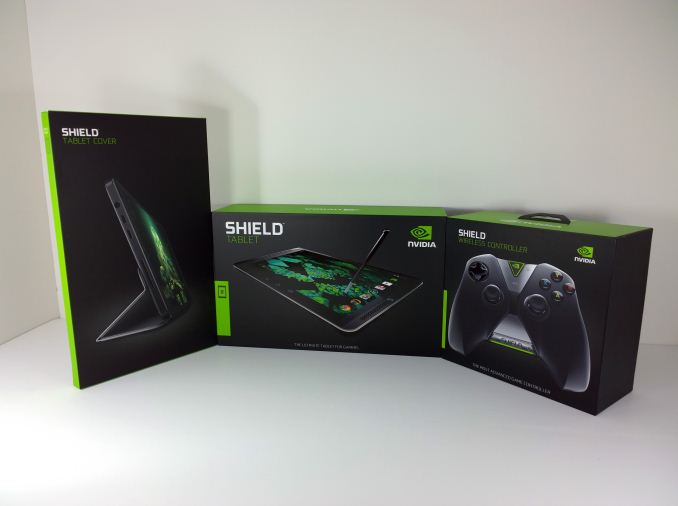
As I discussed in our launch article last week, the Shield tablet is very much the culmination of lessons learned from 2013. While the Tegra Note 7 was a decent tablet, it had to eke out a profit through hardware sales against competition that was willing to sell their tablets with no profit on hardware. Meanwhile the Shield portable was a good portable gaming device, but it was far too specialized to be anything but a gaming device. Without an established gaming ecosystem, NVIDIA struggled against established competitors.
As a result of these influences, today NVIDIA is becoming the first OEM to launch a serious gaming tablet running Android. While gaming tablets have been done before, they’ve been few and far between. Now it has always been technically possible to take a high end tablet and make it usable for gaming, but for the most part these attempts are marred by either the need for root or an application that requires extensive work on the part of the user to create proper control profiles for each game. In addition, the SoC in the tablet is often underequipped for intensive 3D gaming.
That’s where the Shield tablet comes in. With Tegra K1, a dedicated controller, 2x2 WiFi, and a huge amount of custom software, there’s definitely a lot of ground to cover. Once again, while the Shield tablet is a gaming device, it must also be a good tablet. To that end, NVIDIA has tried to differentiate this tablet with DirectStylus 2 and dual front facing speakers/bass reflex ports. I’ve included a table of specifications below to give a general idea of what the tablet is like.
| NVIDIA Shield Tablet | |
| SoC | Tegra K1 (2.2 GHz 4x Cortex A15r3, Kepler 1 SMX GPU) |
| RAM/NAND | 2 GB DDR3L-1866, 16/32GB NAND + microSD |
| Display | 8” 1920x1200 IPS LCD |
| Network | N/A or 2G / 3G / 4G LTE (NVIDIA Icera i500 UE Category 3/4 LTE) |
| Dimensions | 221 x 126 x 9.2mm, 390 grams |
| Camera | 5MP rear camera, 1.4 µm pixels, 1/4" CMOS size. 5MP FFC |
| Battery | 5197 mAh, 3.8V chemistry (19.75 Whr) |
| OS | Android 4.4.2 |
| Connectivity | 2x2 802.11a/b/g/n + BT 4.0, USB2.0, GPS/GLONASS, mini HDMI 1.4a |
| SIM Size | None or MicroSIM |
| Price | $299 or $399 (16GB/WiFi or 32GB/LTE) + $59 (optional controller) |
Hardware
Outside of the basic specs, the tablet itself has a much more subtle industrial and material design. While the large speaker grilles are maintained from the Tegra Note 7, the dimpled look and feel is gone. Instead, the finish is very much reminiscent of the Nexus 5. The feel isn’t quite rubbery the way soft touch finishes tend to be. Instead, it feels more like a high grain matte polycarbonate. Along the sides, there’s a noticeable chamfered edge where the back cover meets the display, although in practice this mostly affects aesthetics rather than in hand feel. The flip cover that is designed for the device is almost identical to the one in the Tegra Note 7, and folds up similarly. As with the Tegra Note 7, there are two angles that the flip cover can take. Overall, the aesthetic is much more subtle than the Tegra Note 7, and looks quite similar to the Nexus 7 (2013).
While it’s important for the tablet portion of the device to have decent material and industrial design, ergonomics and material design are critical for the controller. While the Shield portable had great ergonomics, it was heavy because the entire device had to fit in the controller. With Shield Tablet, that’s no longer the case. The result is that the controller is significantly lighter. While it still has some heft to it, I no longer feel the need to rest my hands against a table after significant playtime.
The controller itself is just as good as the one on the Shield Portable. The buttons, triggers, bumpers, and joysticks are all very close in feel. The one big difference are the tablet/Android controls. Instead of physical buttons, they’ve replaced the physical buttons with capacitive ones. The volume controls have also been moved down to the bottom of the controller and changed from a single button that triggers on-display volume controls to a rocker that allows direct manipulation of volume. Just above the volume rocker is a clickpad, which can be used to move a cursor through the UI. While this option exists, it’s a bit unpolished as the sensitivity isn’t tuned quite right to quickly navigate through the tablet.
Of course, there’s more to the controller than just the buttons and controls. NVIDIA has made sure to do things right by using WiFi Direct for communicating between the controller and the tablet. The frequency used depends upon what access point the tablet is connected to, so it can switch between 2.4 GHz and 5 GHz as necessary. NVIDIA claims that using WiFi Direct instead of Bluetooth drops latency by half, and also allows for microphone input and sound output via 3.5mm jack through the controller. In practice, the controller works great. I don’t have any complaints about this at all. Pairing is as simple as pressing and holding on the NVIDIA logo for a few seconds, then opening the pairing application. Up to four controllers can be paired to the tablet this way, which introduces interesting possibilities for local multiplayer games such as Trine 2. I also didn’t notice a difference in response time of the wireless controller when compared to the wired controller of Shield Portable. It’s incredibly important to get the controller right for gaming devices, and NVIDIA has nailed it. Overall, I’m happy with the basic hardware for both the controller and tablet. While it would be interesting to see a metal unibody design on the tablet, it’s difficult to justify at the price point that this device has to hit.
Of course, while hardware is important, software makes or breaks this tablet, so that’s next.


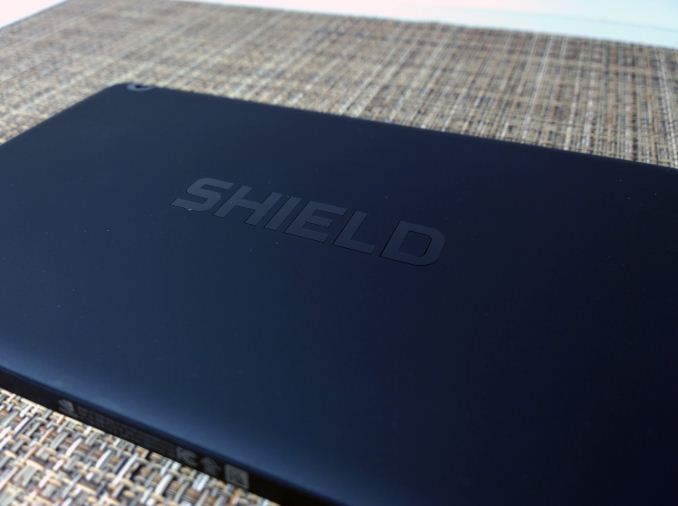
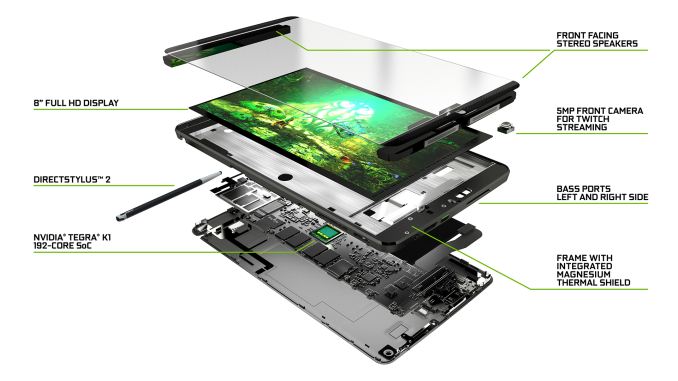
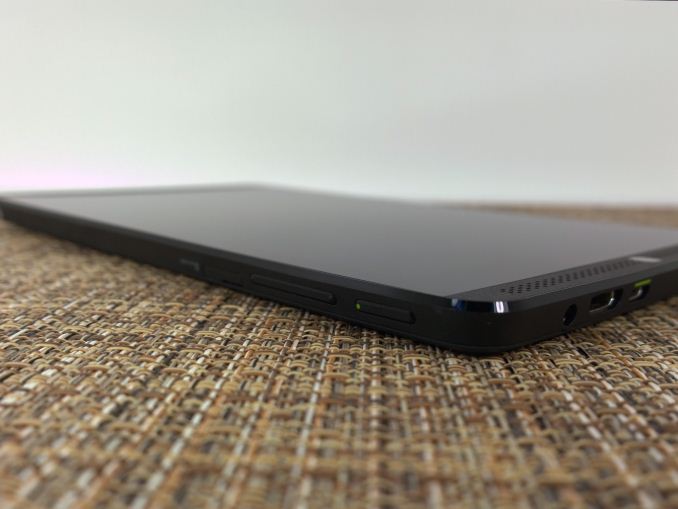
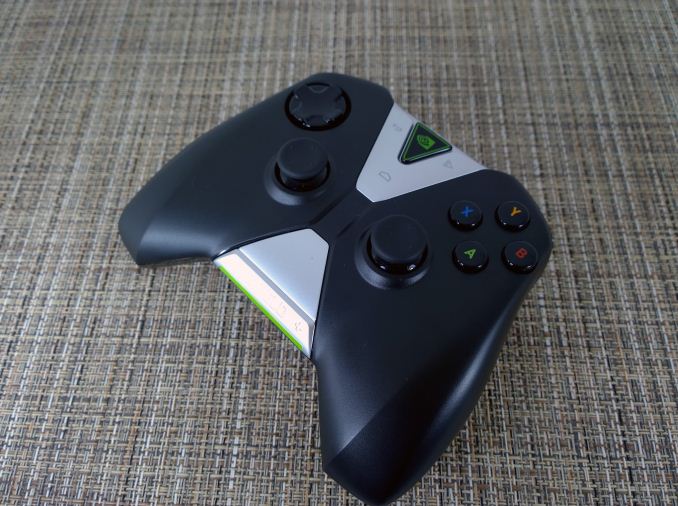








174 Comments
View All Comments
cknobman - Tuesday, July 29, 2014 - link
Thought Nvidia had a real killer here.Until I saw how crappy the screen is. On a tablet having such crappy color reproduction is just not going to cut it.
ams23 - Tuesday, July 29, 2014 - link
Overall the Shield tablet display is not bad but not great. The black levels, contrast ratio, and saturation accuracy are quite a bit better on Shield tablet compared to iPad Mini Retina. The max brightness and white point accuracy are slightly better on Shield tablet compared to iPad Mini Retina. The grayscale and GMB accuracy are quite a bit worse, however, and are the two areas that need some work.rodolfcarver - Friday, October 3, 2014 - link
I agree that it's not bad, but the truth is that most games will be just as good on some of the top tablets (http://www.consumertop.com/best-tablets/ ), and they will also be better for all other tasks. Therefore I don't see the point of the Nvidia Shield.willis936 - Tuesday, July 29, 2014 - link
You must have skipped the cpu and gpu benchmarks...ddriver - Tuesday, July 29, 2014 - link
Color accuracy is pretty much irrelevant for gaming.B3an - Tuesday, July 29, 2014 - link
Well yeah, if you're a moron.zodiacsoulmate - Tuesday, July 29, 2014 - link
that's mean... also you are wrong color accuracy is so irreverent in gaming...inighthawki - Tuesday, July 29, 2014 - link
Games already use low resolution color palettes. Textures almost never have more than 8 bits per channel (and are often compressed beyond that), and lighting calculations and sampling error is already going to produce generally "wrong" colors with respect to the real world. You're absolutely fooling yourself if you believe you will see a noticeable difference between this and a more accurate display while gaming.mkozakewich - Tuesday, July 29, 2014 - link
"Games" use an incredibly varied set of graphical abilities. Maybe first-person shooters are different, and a lot of hyper-realistic AAA games in general; but there are plenty of games that are bright or cel-shaded, and those look a lot better on a screen with rich colours.You can't just say a display is good or bad. The reason they give us all these specs is so that we can make our own choices. Someone who plays games with muted or washed-out colours can decided that it's fine, and that this works for them based on the tradeoffs it makes.
inighthawki - Tuesday, July 29, 2014 - link
I agree there are cases, typically indie games, where this is true, but this is an incredibly small subset of the game market, and also generally not the target audience of such a device. The shield seems to be targeted more at heavy gamers, especially those who wish to stream games from a high end PC in another room. These are the people who typically have many AAA titles and games where the graphics are so complex, and the amount of estimation used to compute lighting and texture quality is off from realistic values enough to not even realize that in cases of perfect color reproduction by the display, the game could very easily have a high error from the "real world" value anyway.